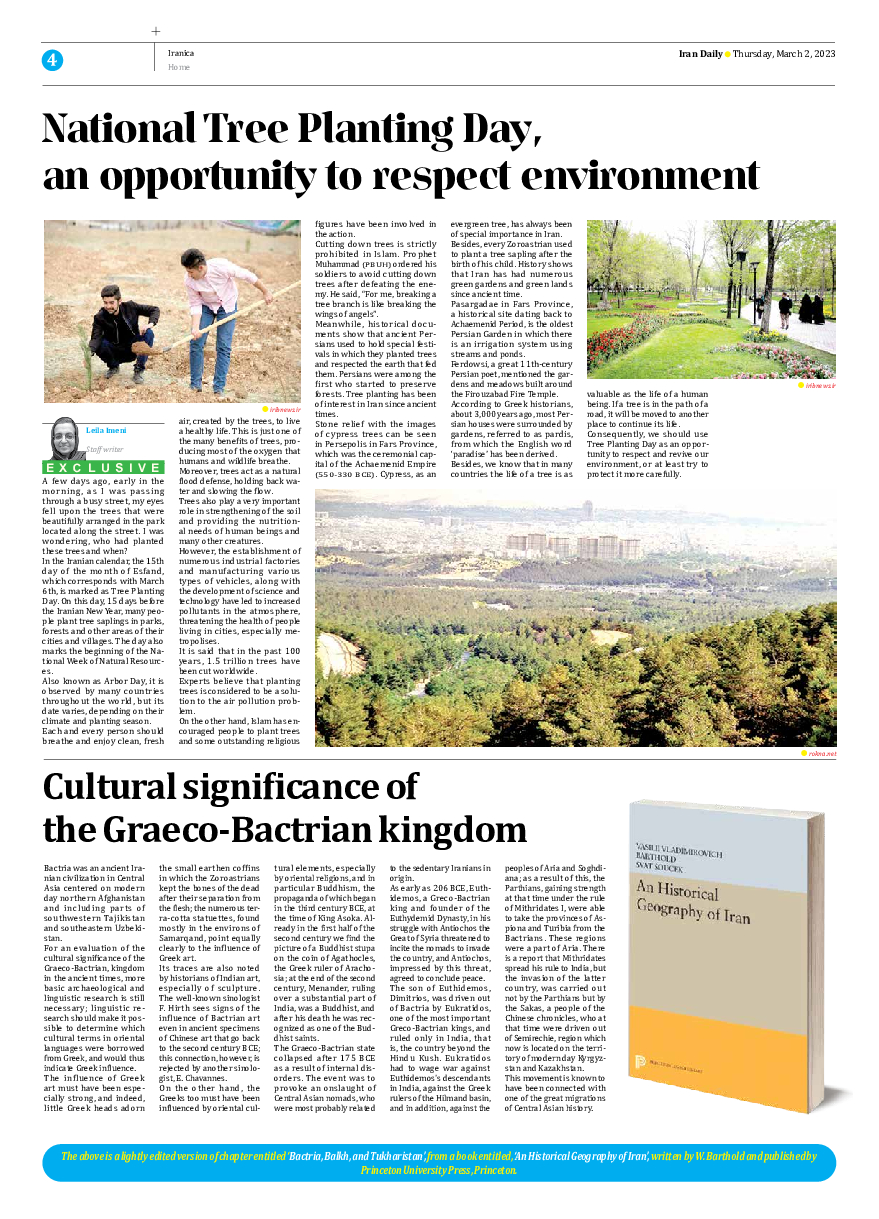
Cultural significance of the Graeco-Bactrian kingdom
Bactria was an ancient Iranian civilization in Central Asia centered on modern day northern Afghanistan and including parts of southwestern Tajikistan and southeastern Uzbekistan.
For an evaluation of the cultural significance of the Graeco-Bactrian, kingdom in the ancient times, more basic archaeological and linguistic research is still necessary; linguistic research should make it possible to determine which cultural terms in oriental languages were borrowed from Greek, and would thus indicate Greek influence.
The influence of Greek art must have been especially strong, and indeed, little Greek heads adorn the small earthen coffins in which the Zoroastrians kept the bones of the dead after their separation from the flesh; the numerous terra-cotta statuettes, found mostly in the environs of Samarqand, point equally clearly to the influence of Greek art.
Its traces are also noted by historians of Indian art, especially of sculpture. The well-known sinologist F. Hirth sees signs of the influence of Bactrian art even in ancient specimens of Chinese art that go back to the second century BCE; this connection, however, is rejected by another sinologist, E. Chavannes.
On the other hand, the Greeks too must have been influenced by oriental cultural elements, especially by oriental religions, and in particular Buddhism, the propaganda of which began in the third century BCE, at the time of King Asoka. Already in the first half of the second century we find the picture of a Buddhist stupa on the coin of Agathocles, the Greek ruler of Arachosia; at the end of the second century, Menander, ruling over a substantial part of India, was a Buddhist, and after his death he was recognized as one of the Buddhist saints.
The Graeco-Bactrian state collapsed after 175 BCE as a result of internal disorders. The event was to provoke an onslaught of Central Asian nomads, who were most probably related to the sedentary Iranians in origin.
As early as 206 BCE, Euthidemos, a Greco-Bactrian king and founder of the Euthydemid Dynasty, in his struggle with Antiochos the Great of Syria threatened to incite the nomads to invade the country, and Antiochos, impressed by this threat, agreed to conclude peace.
The son of Euthidemos, Dimitrios, was driven out of Bactria by Eukratidos, one of the most important Greco-Bactrian kings, and ruled only in India, that is, the country beyond the Hindu Kush. Eukratidos had to wage war against Euthidemos's descendants in India, against the Greek rulers of the Hilmand basin, and in addition, against the peoples of Aria and Soghdiana; as a result of this, the Parthians, gaining strength at that time under the rule of Mithridates I, were able to take the provinces of Aspiona and Turibia from the Bactrians. These regions were a part of Aria. There is a report that Mithridates spread his rule to India, but the invasion of the latter country, was carried out not by the Parthians but by the Sakas, a people of the Chinese chronicles, who at that time were driven out of Semirechie, region which now is located on the territory of modern day Kyrgyzstan and Kazakhstan.
This movement is known to have been connected with one of the great migrations of Central Asian history.
The above is a lightly edited version of chapter entitled ‘Bactria, Balkh, and Tukharistan’, from a book entitled, ‘An Historical Geography of Iran’, written by W. Barthold and published by Princeton University Press, Princeton.







